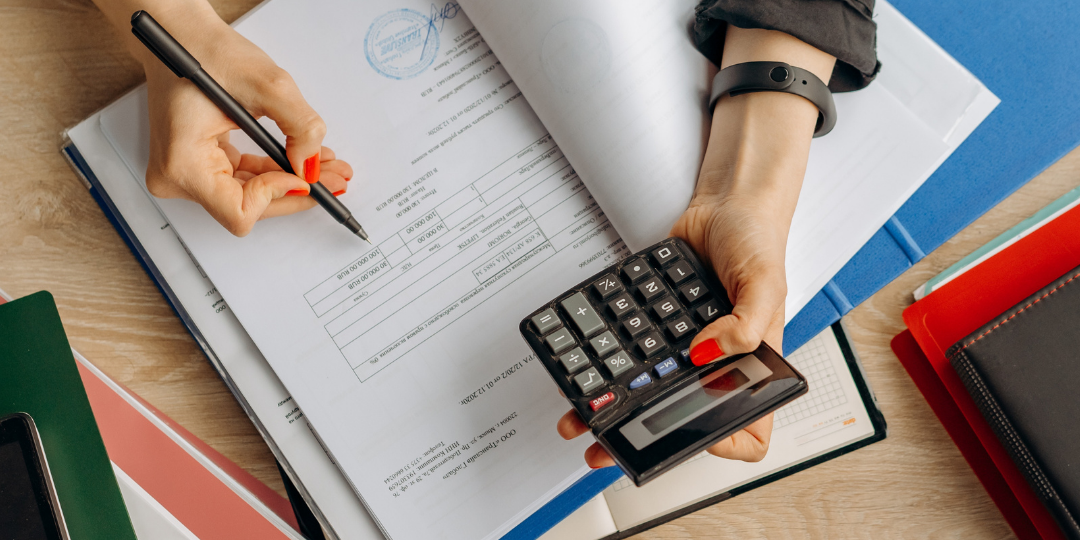When looking for a mortgage, you may come across lenders who pre-qualify you for a larger loan than you intended. Many lenders use typical debt-to-income ratio estimates that don’t account for other home-related expenses. If you take out the largest loan, you risk exhausting your available funds and becoming “home poor,” or cash-strapped. When selecting how much to spend on a home, there are four steps to take.
STEP1: Recognize How Much Of Your Money Should Go Toward Your Mortgage
Evaluate your monthly income and expenses carefully. This will help determine how much you can afford to spend on a home. Bear in mind that you’ll have to budget for taxes, insurance, repairs, and upgrades, as well as increased utility bills.
That may seem like a lot, but keep in mind that certain costs are one-time, while others occur on a regular basis. Knowing how much you can afford to spend on a mortgage is the first step.
Calculate your debt-to-income ratio (DTI). Your DTI is one of the first financial factors a lender will look at. Divide your gross monthly income before taxes (not your take-home pay) by the entire amount you pay in recurring monthly debt to get your DTI.
This figure represents the percentage of income required to make monthly debt payments. On the loan application, make sure to mention everyone’s income and debt. If your spouse, partner, or roommate is a cosigner on the loan, their gross income and recurring obligations are taken into account as well.
The following are examples of recurring debt:
- Student loans
- Car loans
- Credit cards
- Bank or department store credit card
- A personal line of credit with a bank or other financial institution
- Personal loans from any source
- Child support or alimony payment
To figure out how much you can afford, use the 28/36 method. Most people can afford to spend up to 28 percent of their gross monthly income on a mortgage and up to 36 percent on debt payments while still managing other regular obligations, by this formula, which is also used by lenders.
If your finances fall outside of this percentage, some lenders may qualify you for a mortgage, but they will likely impose extra fees and a higher interest rate to compensate for the greater risk, making your mortgage more expensive.
STEP 2: Know All Your Costs When Buying A House
It’s not all about the purchasing price of your home. Most lenders require a downpayment in order to receive a loan. You will have to pay additional closing expenses to complete the purchase and paperwork.
Your “skin in the game” is your down payment. It binds you to the mortgage with a substantial down payment. You can find down payment requirements ranging from 3-20 percent of the home’s purchase price among the many loans offered. Most experts advise you to put as much money down as possible on your home.
Most loan programs require a 20% downpayment, but it’s not always possible to save that much money. You’ll need to qualify for an FHA, VA, or USDA loan if you have a down payment of less than 20%.
Remember to include closing fees in your computations. These costs cover the effort done by the title company to guarantee that you have a clear title. If the seller owes money on the house that isn’t covered by his or her mortgage, the sale of the house may be delayed.
Closing costs also include fees for appraisals, title insurance, attorney fees, and county fees for recording the seller-to-buyer property transfer. Closing costs typically range from 3-6 percent of the overall purchase price. Closing fees, for example, can range from $6,000 to $12,000 when buying a $200,000 house.
STEP 3: Calculate The Cost Of Owning A House
How much does it cost to buy and keep a house? The main ongoing cost of owning is your mortgage payment. Most homeowners will have a fixed-rate mortgage with most 30-year or 15-year conventional loans.
This refers to a loan with a set monthly payment for the duration of the loan. Unless you refinance your terms with the lender, that sum will not change. A longer mortgage term usually means a cheaper monthly payment and a longer repayment period. A shorter mortgage term means a larger monthly payment and a faster payoff of the home.
Utility expenses may cause sticker shock for renters who become homeowners. Your utility cost as a homeowner will roughly quadruple what you pay as a renter. For gas, electricity, sewer, and water, some renters pay the landlord a fixed cost. You may not consider this a significant shift if you already rented a home. You pay for each service as a homeowner based on how much you use it. When you take care of a lawn or garden, for example, your water usage rises substantially.
Property taxes and insurance must be paid by homeowners. Local governments, public schools, roads, emergency services, and libraries are all funded by county property taxes. Your property tax rate will vary depending on where you live. You may search property taxes by county to figure out how much it will cost you to buy a house.
Over time, your home will require repairs and improvements, so you may wish to set up a home maintenance savings account. A decent rule of thumb is to set aside 1-4 percent of the value of your house each year for maintenance and improvements. For example, a homeowner with a $1,000,000 property should set aside $10,000-$40,000 each year for maintenance and large home upgrades.
STEP 4: How Much Money Should You Put Down On A Home? Determine The “Right” Amount
A housing affordability calculator will help you figure out how much house you can afford. There are four important aspects to consider:
- Where do you live?
- Your yearly earnings
- The amount you’ll put down as a deposit
- Recurrent debts and spending on a monthly basis
Start by looking at how much money you make each year before taxes to figure out how much mortgage you can afford to pay each month. Take into account all of your earnings for the year, including salaries, wages, tips, commissions, and so on.
Assume you have a spouse or partner with a source of income who will contribute to the monthly mortgage payment. Make sure to include that in your household’s gross annual income. After that, divide your annual income by 12 to get your monthly income.
Make sure you understand all of the costs connected with homeownership, as well as how they affect one another. Examine your DTI to see if you can afford a low-interest loan or if you’d be better off paying off debt first. Then figure out how much you should spend on a house by multiplying your monthly mortgage payment by other recurring fees.







